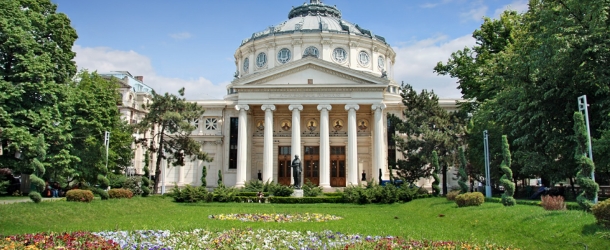River cruises through Eastern Europe, along the might Danube River, will often dock in Romania’s imposing capital city of Bucharest. Known by many throughout history as ‘Little Paris’, modern Bucharest offers an intriguing mix of the old and the new. Centuries-old churches stand side by side with contemporary steel and glass structures, creating a unique backdrop for visitors to appreciate as they arrive in the city as part of their river voyage. This blog will take a look at some of the city’s most popular landmarks and sightseeing opportunities, so you know can familiarise yourself with Bucharest before you embark on the Eastern European leg of your next river cruise.
Parliament Palace
Bucharest’s colossal and astonishing Parliament Palace – formerly known as Casa Poporului or People’s House – is the largest parliament building in the world, covering more than 330,000 square metres and standing at 12 stories tall with a grand total of 3100 different rooms. The structure was commissioned in 1984 by the country’s ex-head of state Nicolae Ceauşescu, who announced a huge part of the city was to be reconstructed in order to accommodate this spectacular parliament and its surrounding plaza.
Tours of the Parliament Palace are available to visitors, leading them through the structure’s many impressive marble rooms up to the balcony of Ceauşescu himself, offering spectacular views across Bucharest. Don’t miss the chance to see this exceptionally important Romanian landmark and marvel at its sheer size and architectural enormity.
Lipscani (Old Centre)
The old centre of Bucharest, known as Lipscani, is one of the few places where the city’s history was not demolished by Nicolae Ceauşescu during the communist party’s systematization of Romania. This charming area of the city is located between Regina Elisabeta Boulevard to the north, the Dambovita River to the south and the streets of Calea Moşilor and Calea Victoriei to the east and west.
Nowadays, the old centre is popular with young people across Bucharest, offering a variety of modern clubs, restaurants and shops interspersed amongst historic 19th century structures, old churches and the ancient ruins of the Wallachian prince’s medieval court, all connected by quaint, cobblestone streets. This mix of old and new is a regular sight across modern-day Bucharest.
Revolution Square
Revolution Square – or Piaţa Revoluţiei – is the site of the famous 1989 Romanian Revolution, when communist leader Nicolae Ceauşescu was overthrown and executed after ordering his troops to fire on anti-government demonstrators some time earlier. A huge monument is situated in the centre of the plaza to commemorate those who died during the revolution.
The square is located very close to a number of other popular plazas and tourist attractions, including the Parliament Palace and Gara de Nord, making it easy to reach during a walking tour of the city. Be respectful whilst in Revolution Square, as the Romanian revolution is still quite recent history and therefore fresh in the minds of local people.
Stavropoleos Monastery
Constructed during the early 18th century by renowned archimandrite Ioanichie Stratonikeas, the Stavropoleos Monastery is one of the most eye-catching structures in Bucharest. The churches colourful façade, decorative sculptures and extraordinary frescoes are amongst the most beautiful in the city.
The monastery is located in the old centre of the city – one of Bucharest’s best-preserved areas – and visitors should take time out their schedule to appreciate this wonderful landmark. One of the building’s most impressive features is its historic library, which houses more than 8000 historically significant books, covering a range of subjects from Byzantine music and art to history and theology.
Cişmigiu Gardens
Cişmigiu Gardens is the oldest public park in Bucharest, designed and built between 1845 and 1860. The gardens are also the largest green space in the centre of the city, covering around 17 hectares around a majestic man-made lake. Cişmigiu Gardens boasts a number of wonderful attractions, including boat hire, restaurants and bars as well as the opportunity for ice-skating during the colder seasons.
Visitors can reach Cişmigiu Gardens from the park’s main gate on Regina Elisabeta Boulevard, close to Bucharest’s city hall. Guests can also enter and explore the park from Știrbei Vodă Street by Crețulescu Palace. As one of the city’s most stunning areas of natural beauty, these verdant gardens are well worth visiting during a stay in Bucharest.
Image Credits:
(1) Dennis Jarvis – flickr.com
(2) Carpathianland – wikimedia.org
(3) Sailko – wikimedia.org
(4) Andrei Stroe – wikimedia.org
(5) Mastermindsro – wikimedia.org








